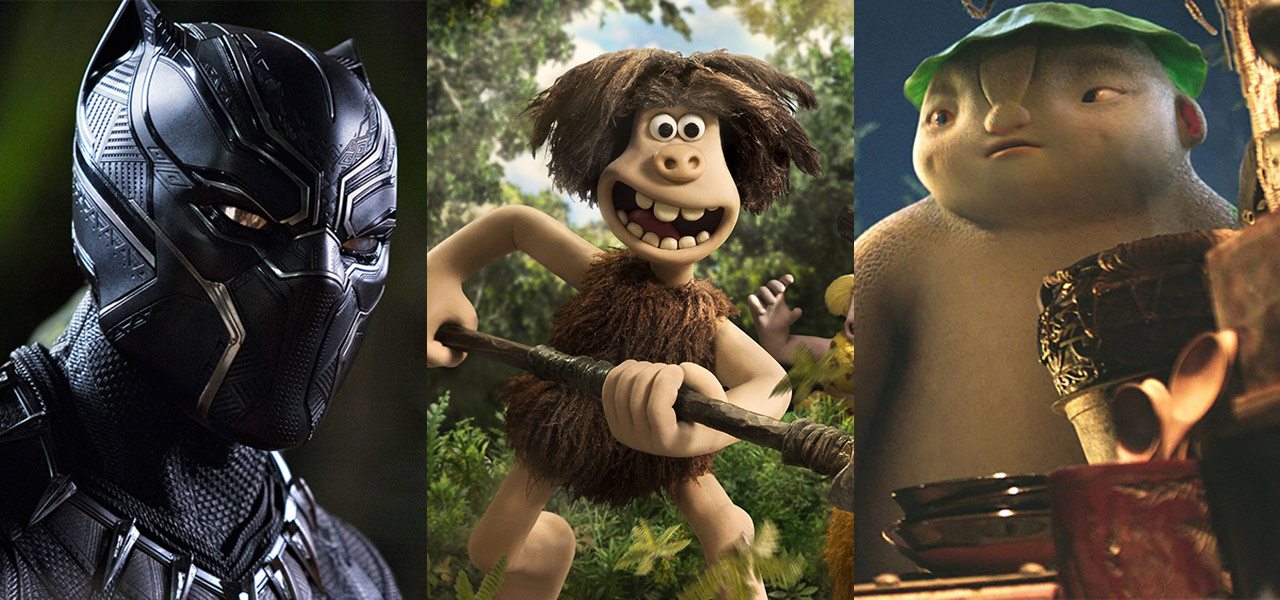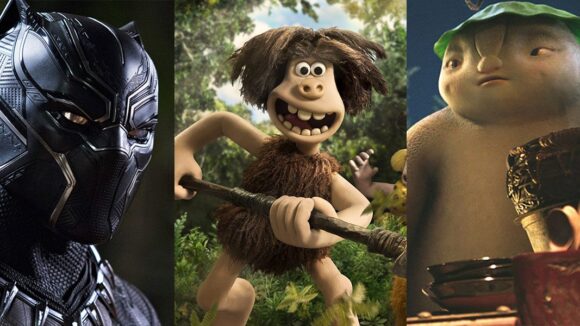

Box Office Report: ‘Black Panther,’ ‘Early Man,’ ‘Monster Hunt 2,’ ‘Boonie Bears,’ ‘Mind Game’
Visual effects were a major part of Black Panther, the Disney-Marvel release that scored the biggest February opening ever, not to mention the fifth-largest domestic launch of all-time. The film grossed $201.8 million over the weekend, and an estimated $235 million in the U.S. and Canada over the four-day Presidents’ Day holiday weekend.
Much has already been written about its record-breaking performance, but as always, what remains underacknowledged is the huge effort of vfx artists in making its success possible. The mammoths grosses of these kind of superhero films would not be possible without the essential contributions of hundreds — and sometimes thousands — of overworked and underpaid vfx artists and animators working all over the globe. Black Panther had the involvement of 10 different studios, including ILM, Digital Domain, Double Negative, Luma Pictures, and Method Studios. Give them a round of applause too for the film’s success.
The positive news of Black Panther unfortunately doesn’t extend to the weekend’s other industry-related release, the British animated feature Early Man. The Nick Park-directed stop-motion film from the famed Aardman Animations launched in seventh place with a meager $3.2 million from 2,494 theaters over the three-day, and around $4.2m total over the four-day holiday.
Fingers will be pointed of course at Black Panther, but these films didn’t target similar audiences. In fact, it’s not even clear who Early Man was targeting: while the audience was evenly split at 51% male/49% female, around 72% of its viewers were over the age of 18, suggesting that the film didn’t draw a lot of families.
Also, if Black Panther was truly the culprit, then it should have affected other films as well, but the market was big enough to support other movies last weekend. The no. 2 film at the box office was the hybrid film Peter Rabbit, which held up extremely well in its second weekend with $23.1 million over the four-day, off just 7.6% from its debut frame.
And in fourth place, there was Jumanji: Welcome to the Jungle, hauling $10 million over the holiday period, a remarkable gross considering that the film is now in its ninth weekend.
To understand Early Man’s performance, there’s two different datasets to look at. For starters, the Aardman aesthetic is diminishing in popularity in the U.S. marketplace. Each of the studio’s stop-mo efforts has had a weaker American launch than the film prior: Chicken Run debuted with $17.5 million 2000, Wallace & Gromit: The Curse of the Were-Rabbit with $16m in 2005, The Pirates! Band of Misfits with $11.1m in 2012, Shaun the Sheep with $4 million in 2015, and now Early Man with $3.2m.
The other factor is the film’s distributor, Lionsgate, which releases animation as pure commercial plays and hasn’t exhibited any capacity to market films based on creativity or craftsmanhip. Early Man was treated as simply another film on the company’s release schedule and not positioned as a unique project from a respected director. It’s hard to expect any kind of decent opening for an Aardman film from a company whose last four releases have all been unremarkable kids matinee fare: My Little Pony: The Movie ($8.9m opening), Rock Dog ($3.7m opening), The Wild Life ($3.3m opening), and Norm of the North ($6.8m opening).
On the international scene, the hybrid Monster Hunt 2 had a mammoth launch in China. The amount is not exactly clear: Comscore reported $141.3 million, while EntGroup goes as high as $198.2 million (1.23 billion yuan). Whichever number you accept, it’s still a lot of money.
Monster Hunt 2 is a follow-up to the 2015 smash Monster Hunt, which grossed $384 million in China and became the country’s highest-grossing film up to that point in time (it has since been surpassed).
The sequel is more ambitious than the original, with cg environments as well as animated characters, and feature the contributions of a half-dozen vfx and animation studios, including ILM and Whiskytree in the United States, BaseFX, Original Force, and Trouper Visual Effects in China, and CGCG in Taiwan.
The director of both films is Raman Hui, a 22-year veteran of Pacific Data Images and Dreamworks Animation who was a character designer and supervising animator on Dreamworks’ first film, Antz, and eventually co-directed Shrek the Third. Hui returned to his native Hong Kong around 2013-’14 to work on the Monster Hunt films, which have elevated the standards for Chinese-produced vfx films.
In the U.S. and Canada, Lionsgate also released Monster Hunt 2 into 69 theaters, picking up $4,942 per theater for a $341,000 total.
Also in Chinese theaters, the cg film Boonie Bears: The Big Shrink, the fifth animated feature based on the popular tv series, launched with $40 million, a franchise best. The films, like the tv series, are produced by China’s Fantawild Animation.
Back in the United States, GKIDS launched Masaaki Yuasa’s 2004 masterpiece Mind Game in seven U.S. theaters. The release went largely unnoticed, picking up a slim $5,609 for an $801 per-theater average.

.png)